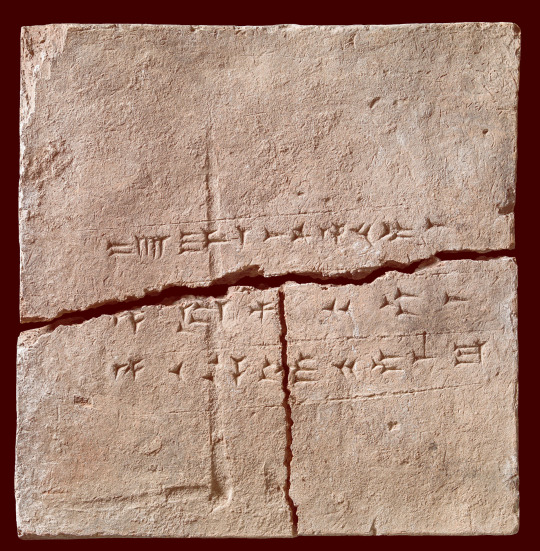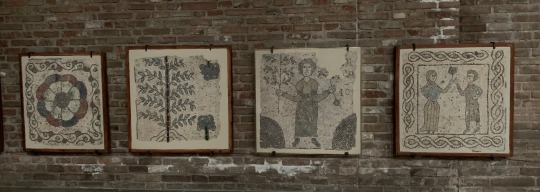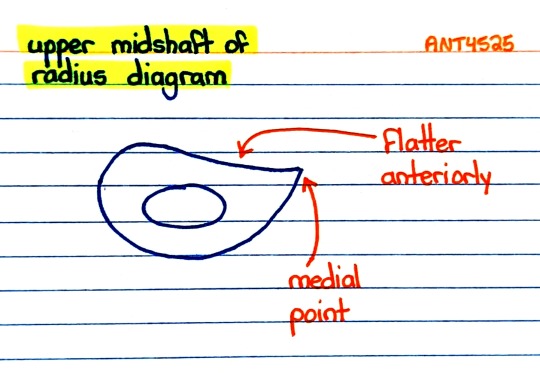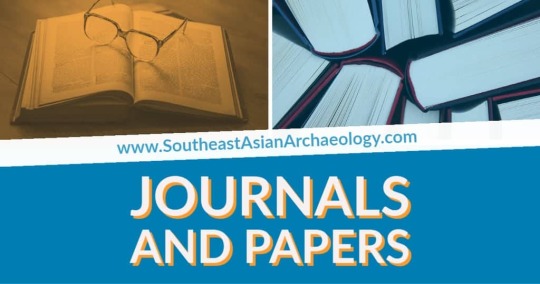#bioarchaeology
Link
By examining skeletal remains, anthropologist Meggan Bullock and colleagues found that in the city of Cholula, Mexico, between 900 and 1531, most people who made it to adulthood lived past the age of 50.
And of course there are many examples from historical records of people who lived very long lives in the past. For example, the sixth-century Roman Emperor Justinian I reportedly died at the age of 83.
Analysis of the tooth development of an ancient anatomically modern Homo sapiens individual from Morocco suggests that our species has experienced long life spans for at least the past 160,000 years.
[...]
Knowing that people often did have long lives in the past might help you feel more connected with the past. For example, you can imagine multigenerational households and gatherings, with grandparents in Neolithic China or Medieval England bouncing their grandchildren on their knees and telling them stories about their own childhoods decades before. You might have more in common with people who lived long ago than you had realized.
715 notes
·
View notes
Text

NEWS
Resurrecting Ancient Flora: Unveiling Biodiversity Secrets from a 2,900-Year-Old Clay Brick
#archaeologs#archaeology#archaeological#history#bioarchaeology#news#archaeological news#arkeoloji#tarih#sanat#biyoarkeoloji
313 notes
·
View notes
Text




The floor is hella cold but I couldn’t work sitting anywhere else. While I’m reading for my PhD proposal I’m attempting for the fist time to crochet myself a sweater. Crafting is my way to relax after a long day in the lab.
Also, since this is the Archaeology hashtag I’m sharing cute 6th century CE mosaics from the city of Ravenna, which I visited a few weeks ago. I’m a bit of a nerd about late antiquity and the Romano-barbaric interaction, I info-dumped my girlfriend for the whole trip. Bless her she puts up with me and my fascination for the Ostrogoths!
#archaeology#bioarchaeology#anthropology#physical anthropology#art#bioarchaeology of adolescence#bioarchaeology of childhoood#studyblr#archaeology of childhood#study#crafts#crochet
136 notes
·
View notes
Text
Trying to find a very specific scientific article is torturous and should be a level in hell
#academics#scientific article#science#academia#anthropology#physical anthropology#biological anthropology#bioarchaeology#archaeology#personal stuff#personal#archeology#research
317 notes
·
View notes
Text
Reading today’s Dracula Daily reminded me AGAIN of a really good article I read a few years back about how at least some vampire mythology is likely inspired by the symptoms of Tuberculosis in times before germ theory was widely understood or accepted:
how victims slowly wasted away, but would unpredictably get worse or better over time before they actually died,
how those around them were likely to get infected after a delay and start wasting away themselves (as if their life force was being drained by the first person who got ill...), etc. etc.
Anyway, I tracked down the article! Still need to re-read it myself, but from what I recall it’s well worth a read if you like vampires, archaeology, and history!:
https://www.smithsonianmag.com/history/the-great-new-england-vampire-panic-36482878/
(It’s also about a fascinating period during the 1800s in rural New England when townspeople kept exhuming the graves of people they suspected may have been vampires in order to perform rites to stop them from rising again!)
221 notes
·
View notes
Text
If this truly does pinpoint the land of Punt, it is such important news for Egyptology.
37 notes
·
View notes
Text
Hello would anyone like to talk to me about palaopathology or bioarchaeology I can't guarantee I'll follow everything I'm told but please someone talk to me about ancient cheeses people with deadly diseases, healed over injuries or idk talk to me about teeth bc the teeth section was really interesting
8 notes
·
View notes
Text

Patreon
#studyblr#notes#my notes#anthropology#biological anthropology#bioanthropology#bioanthro#bioanth#bio-anthropology#human biology#human osteology#biology#bio#osteology#osteological analysis#skeletal system#forensics#forensic anthropology#human bones#bones#forensic science#science#bone analysis#human identification#bioarchaeology#bioarcheology#archaeology#archeology#biological science#life science
2 notes
·
View notes
Text
“Phylogenetic tree analyses show that Negritos are basal to other East and Southeast Asians, and that they diverged from West Eurasians at least 38,000 years ago. We also found relatively high traces of Denisovan admixture in the Philippine Negritos, but not in the Malaysian and Andamanese groups, suggesting independent introgression and/or parallel losses involving Denisovan introgressed regions.”
“We did not observe any direct links between the different Negrito groups and the African Pygmies (Biaka). This is in agreement with previous results (…) and suggests that observed morphological similarities among the Negritos and African pygmies are more likely due to convergent evolution.”
I always end up rereading this 2017 study (open access!) because it is so fascinating and breaks down so many misconceptions about the peopling of Southeast Asia and surrounding areas. This and the 2021 Larena et al. paper - although the methods to obtaining information for the latter were dubious - shed quite a lot of light on the pre-Austronesian and Austronesian ancestry of Philippine ethnicities.
2 notes
·
View notes
Text
Something that has been really pissing me off in the Tumblr archaeology community is people who share cool articles WITHOUT censoring/ warning people about images of human remains. Just because they are bones doesn’t mean they weren’t people. It’s inherently unethical and clearly a lot of these people sharing this stuff aren’t bioarchaeologists.
Now, there shouldn’t be anything that stops people from learning about this stuff no matter their background. I don’t care if you’re part of the discipline or not I think if you find this stuff cool that it is awesome! But people need to be aware of the laws and ethic in place when it comes to sharing pictures of human remains.
Just because sometimes it’s not illegal, doesn’t mean it’s right.
#I might be in the minority but it’s something we need to talk about#archaeology#ethics#archaeologist#archaeology community#archaeology tumblr#bones#human remains#rant#bioarchaeology#bio anthropology
3 notes
·
View notes
Link
The evidence suggests that people in the past devoted significant time and scarce resources to caring for those in need. Scouring the archaeological literature, Tilley and others have turned up evidence that caring for the weak and sick is behavior that goes back as far as Neanderthals. "I take these cases for granted now," Tilley says. "From the very earliest times, we can see evidence that people who were unable to function were helped, looked after and given what care was available."
274 notes
·
View notes
Text
Mildly amused reading about bioarchaeological studies comparing survivors and non-survivors.
Honey, you dug the samples out of graves, non of them survived.
#of course i know what it is about#and these are important studies#but being amused about it makes#reading papers a bit less exhausting#archaeology#bioarchaeology#resilience#research#science#papers
3 notes
·
View notes
Text
The fact that everything in archaeology/bioarchaeology is all about the context makes my weird neurodivergent brain very happy! Every bit of information is necessary, and there's always a new thing to learn!
#archaeology#bioarchaeology#anthropology#physical anthropology#bioarchaeology of adolescence#bioarchaeology of childhoood#archaeology of childhood#study#studyblr#phdblr#phdjourney#osteoarchaeology
82 notes
·
View notes
Text
[Paper] A Multi-Disciplinary Approach to Understanding Hong Kong's Past: Bioanthropological, Biomolecular, and Zooarchaeological Methods
via Journal of the Hong Kong Archaeological Society, 2024: Highlighting this paper by Cheung et al. published in the Journal of the Hong Kong Archaeological Society.
via Journal of the Hong Kong Archaeological Society, 2024: Highlighting this paper by Cheung et al. published in the Journal of the Hong Kong Archaeological Society.
The past of Hong Kong has been extensively explored through close to a century’s systematic archaeological surveying, investigations, and excavations. These efforts mostly included landscape, artefactual, and rescue archaeology. is…

View On WordPress
0 notes
Text
On one of the structures on Eastbourne sea front.
The text reads:
"ALONG
THIS
COAST
NEAR
BEACHY
HEAD
A
YOUNG
WOMAN OF
SUB-SAHARAN
AFRICAN ORIGIN
WAS BURIED ONE
THOUSAND EIGHT
HUNDRED YEARS AGO.
SHE SPENT MOST OF
HER LIFE THRIVING ON A
DIET RICH IN THE FRUITS
OF THE SEA AND FROM
FERTILE DOWNLAND FIELDS.
HER STORY IS RECORDED IN
CHEMICALS
HIDDEN WITHIN
HER TEETH AND IN HER FRAGILE
BONES BUT HOW OR WHY SHE
ARRIVED
ON THESE SHORES TO
MAKE A NEW HOME SO LONG AGO
WILL PROBABLY REMAIN A MYSTERY.
BEACHY HEAD LADY cAD200-225."



1 note
·
View note
Text
More evidence (like we need any more) that life was perilous for children in the ancient world.
19 notes
·
View notes